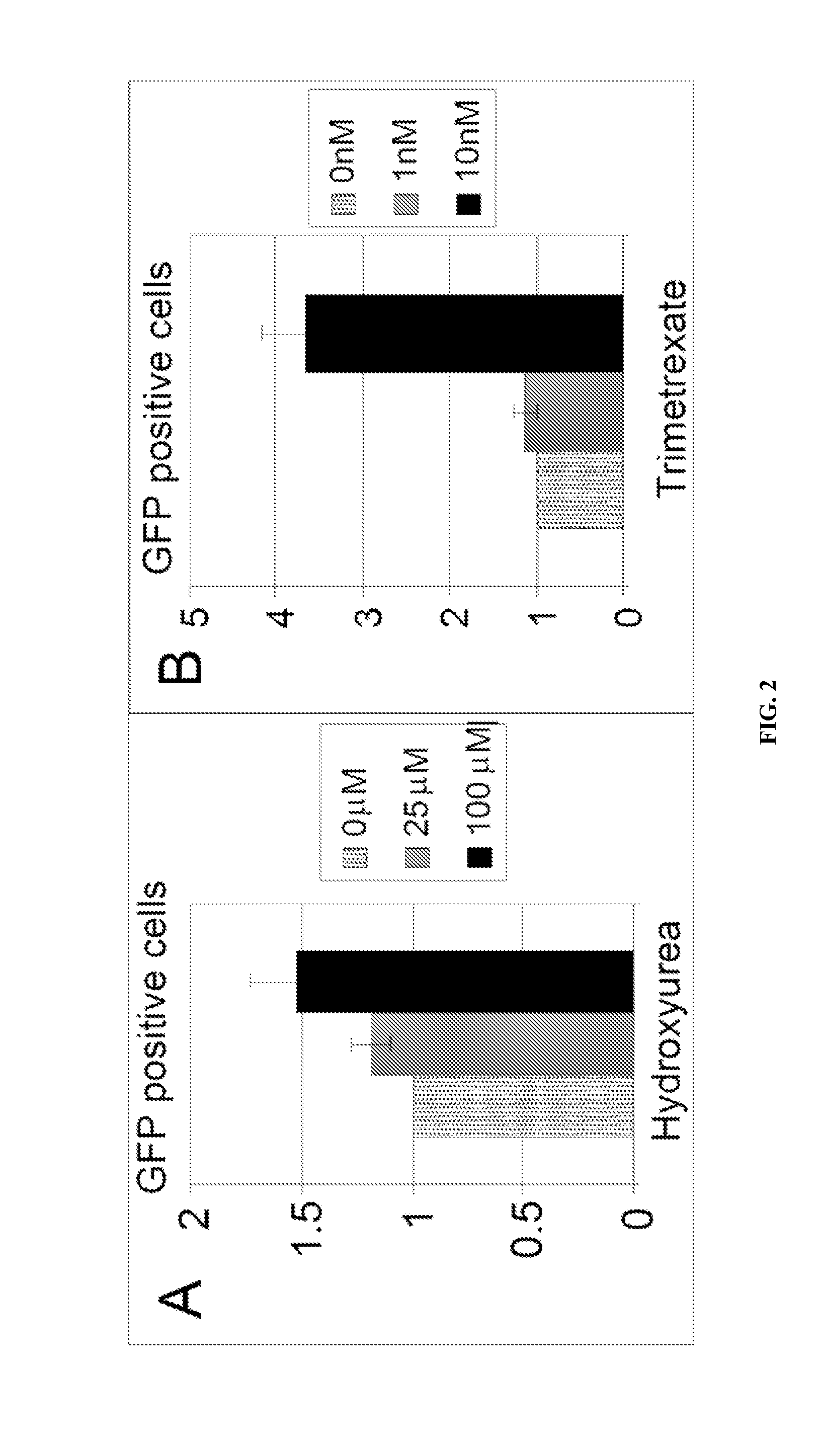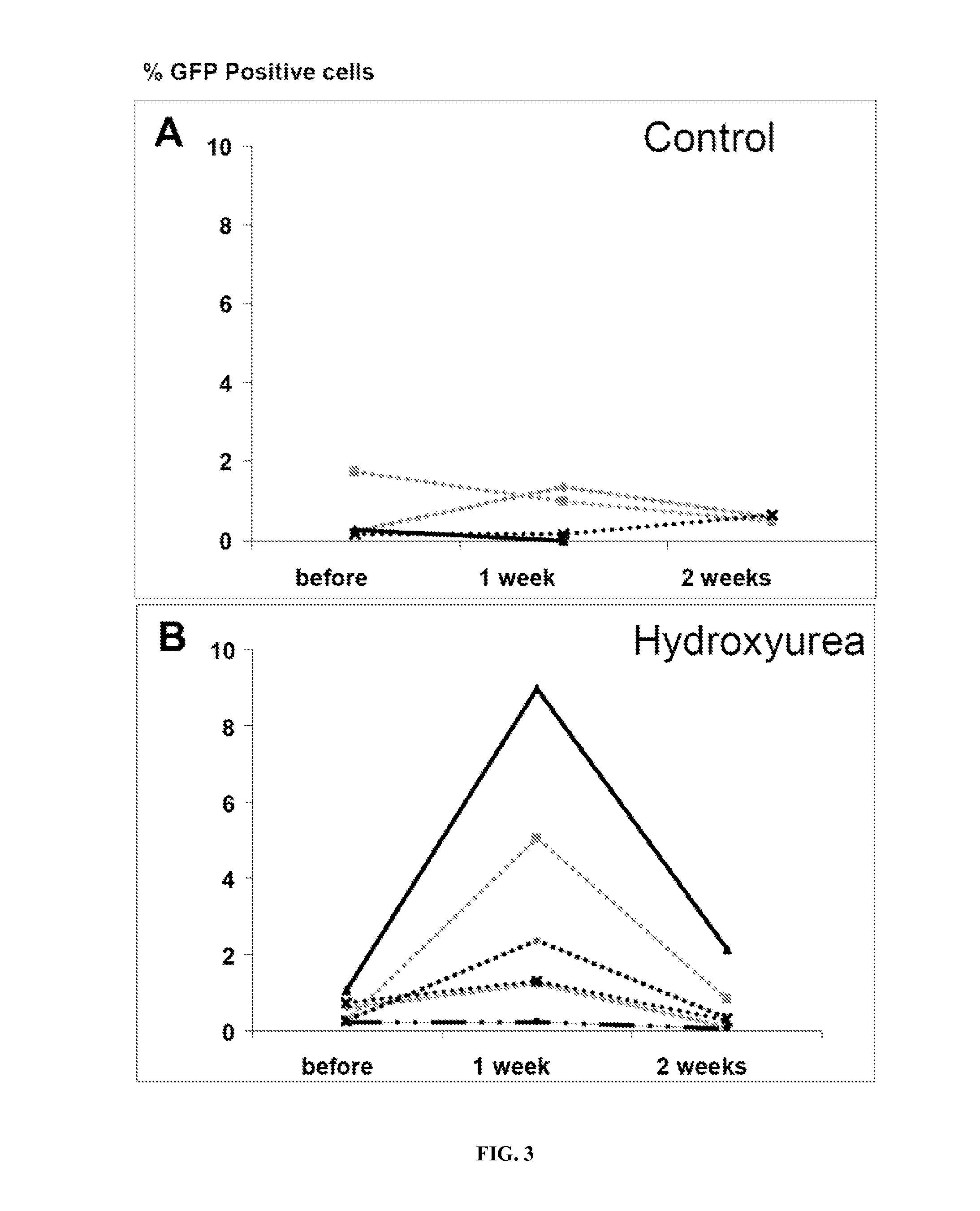Transgenic cell selection
a technology of transgenic cells and selection, applied in the field of molecular biology and medicine, can solve the problem of not being effectively cytotoxic to non-transgenic cells
- Summary
- Abstract
- Description
- Claims
- Application Information
AI Technical Summary
Benefits of technology
Problems solved by technology
Method used
Image
Examples
example 1
Combined Hydroxyurea and Trimetrexate
Killing Effect of Hydroxyurea and Trimetrexate on Hela Cells
[0104]Hela cells were cultured in DMEM medium. To assess the killing effect of Hydroxyurea (HU) and Trimetrexate (TMTX), cells were incubated with either HU or TMTX or both at final concentrations of 100 μM HU and 1 nM TMTX for 5 days. Cells were then washed with PBS, harvested and stained with Calcein (Invitrogen) according to the manufacturer specifications to determine cell survival.
Construction of a New Generation Mir-16 Lentivectors
[0105]PCR reactions conditions were set up according to the manufacturer specifications (Agilent Technologies, Santa Clara, USA) and using The Herculase II Fusion DNA Polymerase. PCR products were ligated, using T4 DNA ligase (New England Biolabs, Ipswich, Mass.), into a pENTR Gateway entry plasmid containing the Green fluorescent protein (GFP) coding sequence (pENTR-GFP). The final lentivector expressing-GFP and the Hydroxyurea or Trimetrexate resistance...
PUM
| Property | Measurement | Unit |
|---|---|---|
| Electrical resistance | aaaaa | aaaaa |
| Cytotoxicity | aaaaa | aaaaa |
| Defects | aaaaa | aaaaa |
Abstract
Description
Claims
Application Information
 Login to View More
Login to View More - R&D
- Intellectual Property
- Life Sciences
- Materials
- Tech Scout
- Unparalleled Data Quality
- Higher Quality Content
- 60% Fewer Hallucinations
Browse by: Latest US Patents, China's latest patents, Technical Efficacy Thesaurus, Application Domain, Technology Topic, Popular Technical Reports.
© 2025 PatSnap. All rights reserved.Legal|Privacy policy|Modern Slavery Act Transparency Statement|Sitemap|About US| Contact US: help@patsnap.com



